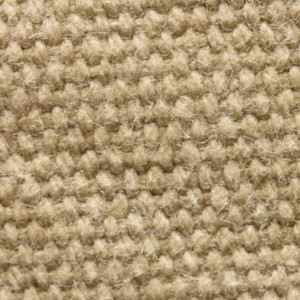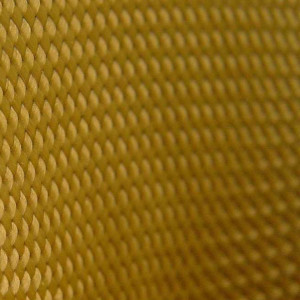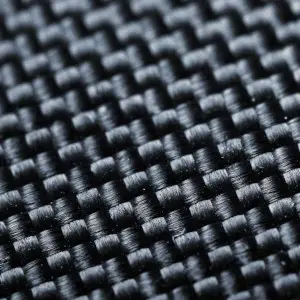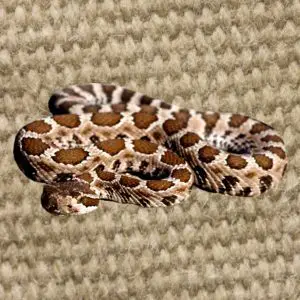Special fabrics are what make snake-proof pants and snake gaiters capable of protecting the wearer from painful snake bites. But which snake-proof fabrics are best? We discuss the answer in this post.
Why Use Snake Proof Fabrics?
Each year, thousands of people around the world traverse the outdoors and are bitten by snakes. Most of these happen unexpectedly when a person comes across a snake hidden in the brush minding its own business.
People typically receive most snake bites below the knee and near the ankles and calves. This is where exposed skin from shorts and thin pant materials present an opportunity for the snake to create significant physical damage.
Some snake bites lead to severe infection or illness from venom and require immeditiate medical attention. This is why snake proof fabric exists and are included in the design of snake pants and gaiters.
Types and Cost of Snake-Proof Fabrics
Snake-proof pants and gaiters are made from a range of fabrics (some synthetic) that give them strength and bite resistance. The three most common snake-proof fabrics are heavy canvas, Kevlar and nylon.



These are often combined in the same garment, either in multiple layers or located in different places depending on the risk of a snake bite and comfort considerations.
Here are some highly rated snake-proof fabrics to use for making snake-proof garments:
Military Grade Tan Kevlar Fabric American Made (17 ounce)
Comfort Twill Black 50% Kevlar / Nomex for snake bite and fire protection
Olive Drab Green Cordura Nylon (1000 denier)
Thick Grey Waterproof Outdoor Canvas (1800 denier)
As an Amazon Associate, SelectSafety earns commissions from qualifying purchases made through links in this post.
A list of fabrics used in snake-proof and snake-resistant pants and gaiters are shown below, along with the typical cost of the material.
Snake Proof Fabric Cost (price per yard):
- Cotton ~ $9
- Khaki ~ $9
- Denim ~$9
- Polyester ~12
- Kevlar ~ $25
- Spandex ~$13
- Canvas ~ $12
- Wool ~ $16
- Cordura ~ $12
- Nylon ~ $10
- Rawhide ~$15
- Oxford fabric ~$9 (depending on the type)
- Fleece ~ $20
- Leather ~ $20
Snake-Proof Pants That Use Patented Fabrics
There are several companies that produce their own patented snake-proof fabrics for their protective pants, gaiters and chaps. These include:
These companies each have their own patented fabric, some of which are ballistic, and tested with live snakes to prove their ability to protect against snake bites.
Key Points to Consider With Snake-Proof Fabrics
When purchasing snake resistant fabric or any garment used for snake bite protection consider the following characteristics:
- Puncture resistance (the #1 essential characteristic!)
- Thickness (higher “denier” means thicker threads, which is generally better!)
- Tear resistance
- Stretch resistance
- Flexibility
- Water resistance / absorption
- Drying speed
- UV resistance
- Temperature resistance
- Durability
- Breathability
- Wind resistance
Remember, the whole point of snake proof fabrics is to protect against snake bites. Some aspects are secondary and can be handled by additional fabric types combined on the same garment.
The following cloth characteristics will ENHANCE snake bite protection:
- Higher weight fabric
- Tighter weave
- Multi-layer
When comparing different fabrics for snake bite resistance and wearability, here are some useful points:
Nylon is is stronger than Polyester and cordura, depending on the type.
Canvas is not as strong as nylon when it comes to tearing.
Kevlar is well known as a bullet-proof and stab-proof material and is used for guard vests, motorcycle protective gear, and even nuclear power plant worker protection. However, kevlar is expensive and more difficult to sew by hand.
Make sure to do your research into the specific type of each fabric to determine its overall strength.
Many fully constructed snake proof pants that you can purchase will include waterproof coating outside the fabric and thicken internal lining to maintain warmth.
Multi-Fabric Snake-Proof Pants and Gaiters
Many snake proof pants will have protective fabric added to the legs, crotch, and pocket areas to enhance safety from snake bites.
Cotton material is often used to make the pants comfortable along most of the legs and waist area. However, cotton itself is not enough to prevent snake-bite injuries. Consider how important your safety vs. comfort is when deciding to go with a multi-fabric snake pants.
What Snakes Should the Fabric Withstand?
The snake-proof fabric should be able to withstand snake bites from all types of venomous and non-venomous snakes. The key is to prevent the snakes fangs from penetrating through the fabric to reach the skin on your ankle or leg.
- Rattlesnakes (#1)
- Cottonmouths (#2)
- Copperheads (#3)
- Kingsnakes
- Rat Snakes
- Gopher Snakes
- Bull Snakes
- Burmese Pythons
Outside North America, the two most common venomous snake types to consider are:
- Cobras
- Vipers
Fabrics for Homemade Snake-Proof Pants
You can make homemade snake proof pants or to augment your regular jeans in the legs region.
Its possible to make your own snake-proof pants using the fabrics listed above. However, its important to avoid the weaker materials that are easily pierced unless used in multiple layers. Even then, a dense weave is recommended.
Thickness
Materials like thin denim are easier to sew but are more likely to be pierced by snake bites. Kevlar and cordura nylon are much stronger but more expensive and harder to sew. Its possible to test the material for snakebite resistance using a fat needle or hook and applying some force before using it. The harder it is for you to peirce, the better it is as a snake-proof aterial.
Tightness of Weave
Effective snakeproof fabric will have a tight weave that cannot be easily peirced by snake’s fangs. They can be included with other materials such as cotton or wool to enhance their resistance to snake bites, while also remaining comfortable and breathable.
Layers
Layers are important when making snake-proof pants and make extra barriers for snake teeth to have to penetrate through. You can also line the inside of the pants with softer material for warmth and comfort. Experiment with layers and don’t be afraid to add tougher material like rawhide in between the the less dense materials, which can provide extra protection.
Snake Fangs Deliver Venom
Most snakes are non-venomous, but the ones that are can cause injury and even death to humans. Even snakes not known to be venomous, such as constrictors, still have small amounts of venom to help subdue their prey.
Some well-known venomous snake species include:
- Rattlesnakes
- Vipers
- Cobras
- Adders
- Mambas
- Kraits
- Browns
Some of these have extremely toxic venom to humans and can result in death if not treated quickly enough. See this link to learn more.
It’s essential to use snake-proof fabrics in boots and clothing to protect against these venomous snakes.
What Fabric? Consider Fang Types and Length
There is more than one type of fang. Some types of fangs are hollow, whereas others are solid and act more like normal teeth. Hollow fangs are specially designed to deliver concentrated venom to prey.
Some fangs can fold and stay hidden only to appear during an attack. For instance, an eastern diamondback rattlesnake’s fangs can grow up to 1 inch in length and are long enough to penetrate deep into the flesh. Venom is shot through the fangs quickly and with force leading to blood and tissue damage. A highly puncture-resistant material like Kevlar is advised to resist large rattlesnake bites.
When purchasing snake proof pants for your job, it is important that they can withstand a deep fang puncture. Make sure to research the pants, what they’re made of and the manufacturer’s guarantee against snake bites. Basically, find out exactly how capable it is of withstanding snakebites before traipsing off into snake country!
How Snake Bites Penetrate Clothing
Many snakes have both fangs and teeth. Some have teeth only and are not located in an area of the mouth that can penetrate through clothing.
Fangs are located near the front of the snake’s mouth and their teeth are set along their jaws and covered mostly by gums until they bite. Similar to sharks, snakes can have several rows of teeth on the top and bottom, depending on the species. A snake that appears to not have any teeth may have plenty hiding under their gums.
Snake teeth and fangs can cause serious injuries to humans when bitten and require immediate medical attention, even hospitalization. See this link for more information on how to treat a snake bite.
Most Snake Bites Happen Out of Self Defense
Most snakes will not bite out of hunger or out-right aggression. Snakes will attack and bite usually out of fear of being attacked by a human or other large animal. This is why most people are bitten when walking through the brush and run into a snake minding its own business. That is the purpose of snake-proof pants and snake-proof materials, to protect you while traversing brush or boulders with potentially snakes hidden inside or underneath.
Constrictors Also Have Teeth!
Some constrictor species have teeth and can still bite you and sink their sharpies into your skin if they feel threatened. For instance, boa constrictors have over 100 teeth used for grabbing small prey. A little extra venom is used to paralyze their meal.
In North America constrictors that will bite you include kingsnakes, garter snakes and burmese pythons. Even non-venomous constrictors can still cause pain and infection to humans.
A less puncture-resistant material like heavy cotton duck or denim can be effective against snake bites from non-venomous species.
Can Snakes Bite Through Rubber?
Wearing rubber boots an give you a false sense of security when stepping over logs or boulders where snakes are hidden. They can certainly help reduce the impact of a venomous snake bite, but are not completely snake-proof.
Most copperheads have fangs too short to penetrate through rubber boots. But rattlesnakes have longer fangs and can penetrate most rubber boots except heavy-duty construction rubber boots.
Even if a rattler bites the boot but doesn’t get through the rubber, the fang can still break off in the boot. When you take off the boot you could get a venom injection in your hand.
The arch and right above the top of the boot are the most vulnerable to snake bites. The arch is where the material is thinnest and tightest around the foot and also within easy reach of a rattler.
Rubber boots that fit loosely are better than those that fit tight against the skin. The additional air space provides a safety buffer in case a snake’s fang penetrates the rubber shell.
Can Snakes Bite Through Leather?
Yes, snakes can bite through leather, including leather boots and gloves.
For example, cowboy boots typically don’t have the puncture resistance to prevent the fangs of an adult rattlesnake from penetrating, but they will give you some protection. A large rattlesnake with a bit force of more than 150 psi can bite through traditional cowboy boots.
A large copperhead of over 28 inches can also bite through leather boots. However, copperheads have shorter fangs and tend to cause less damage if they make it through the leather.
Leather boots and gloves can stop a small snake from penetrating, unless the leather is very thin or tight. Even though leather feels like it provides a lot of protection, the puncture resistance can vary a lot. So it still pays to be careful.

